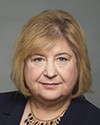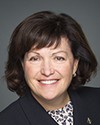I think because the issue of capacity is always identified as a growing set of skills, the gauge on what level of capacity we require at Sandy Bay and also education for other schools is going to be specific to each community. However, with the cost of living and the increase of professional fees, that number has yet to be determined. I'm pretty sure it is going to be a pretty high percentage to identify from a first nations school to a provincial-level school.
Some of the barriers that we encounter, especially in the areas of funding, are the collective bargaining agreements that we have within our community. We have two collective bargaining agreements, which are The Manitoba Teachers' Society and MGEU. The negotiations from there really hinder what financial capacities we can ensure towards instructional services, towards programming within our own schools. It really does impede our ability to guarantee certain programming as a result of collective bargaining agreements that we currently have.
If you have any suggestions for us and or any advice that we could utilize to deal with these unions, we definitely have an open ear for it. I have always said—and I have no rudeness intended to the unions—they will, one of these days soon, be the death of the community.



